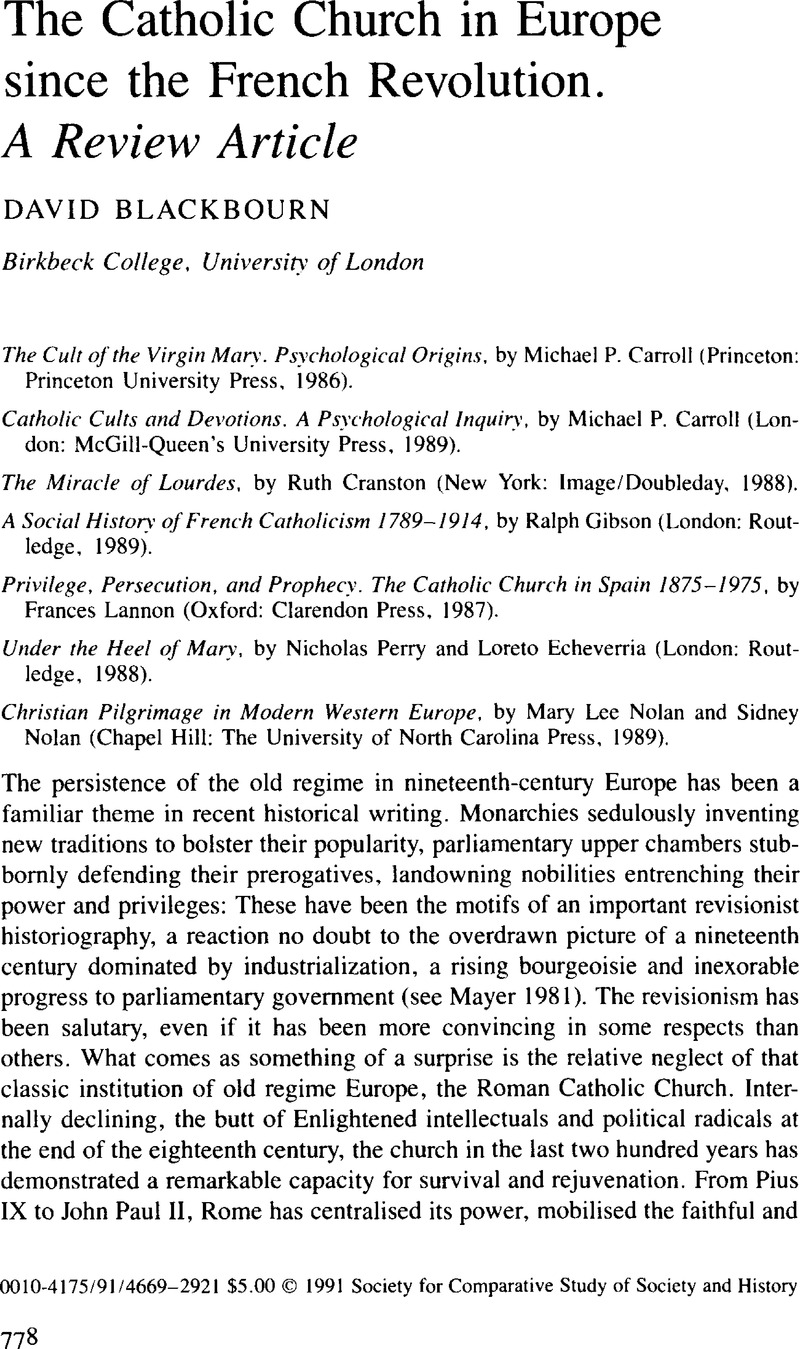Crossref Citations
This article has been cited by the following publications. This list is generated based on data provided by Crossref.
N. Kalyvas, Stathis
and
Chiaramonte, Alessandro
1996.
LA FORMAZIONE DEI PARTITI CONFESSIONALI IN EUROPA.
Italian Political Science Review/Rivista Italiana di Scienza Politica,
Vol. 26,
Issue. 2,
p.
317.
Heilbronner, Oded
2000.
From Ghetto to Ghetto: The Place of German Catholic Society in Recent Historiography.
The Journal of Modern History,
Vol. 72,
Issue. 2,
p.
453.
Vanderstraeten, Raf
2002.
Cultural Values and Social Differentiation: The Catholic pillar and its education system in Belgium and the Netherlands.
Compare: A Journal of Comparative and International Education,
Vol. 32,
Issue. 2,
p.
133.
Howard, Thomas Albert
2006.
Commentary — A “Religious Turn” in Modern European Historiography?.
Church History,
Vol. 75,
Issue. 1,
p.
156.
Ameigeiras, Aldo
and
Suarez, Ana Lourdes
2010.
apariciones de la Virgen. El fenómeno de las apariciones de la virgen en Salta.
Ciencias Sociales y Religión/Ciências Sociais e Religião,
Vol. 12,
Issue. 13,
p.
103.
Zimmer, Oliver
2010.
Beneath the “Culture War”: Corpus Christi Processions and Mutual Accommodation in the Second German Empire.
The Journal of Modern History,
Vol. 82,
Issue. 2,
p.
288.
Schaefer, Richard
2014.
Political Theology and Nineteenth-Century Catholicism.
Nineteenth-Century Contexts,
Vol. 36,
Issue. 3,
p.
269.
Bakare Najimdeen
2015.
Muslims and the Charlie Hebdo Saga.
Policy Perspectives: The Journal of the Institute of Policy Studies,
Vol. 12,
Issue. 2,
Levytska, Mariana
2018.
THE «SACRED RUS» CONCEPT AND SACRALISATION OF THE IMPERIAL POWER BY THE RELIGIOUS ART (POCHAYIV MONASTERY IN 19TH CENTURY SAMPLE).
The Ethnology Notebooks,
Vol. 139,
Issue. 1,
p.
179.
Forlenza, Rosario
2019.
New Perspectives on Twentieth-Century Catholicism.
Contemporary European History,
Vol. 28,
Issue. 4,
p.
581.
Mahla, Daniel
2020.
Orthodox Judaism and the Politics of Religion.



